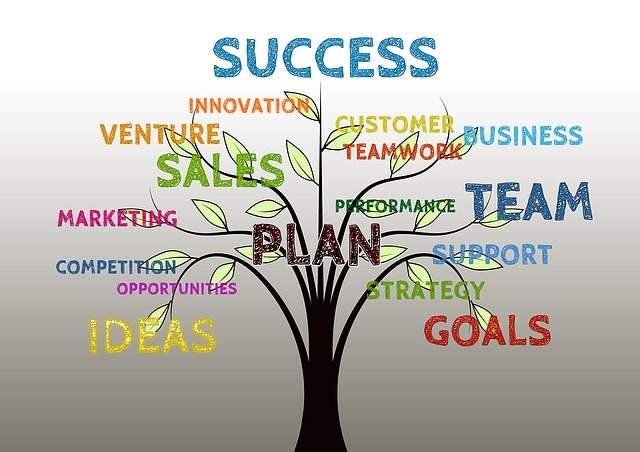
How To Build A Sales System In Business

Just imagine that just a couple of years ago, you would have found such sellers who would instantly sell everything you have and make you a lot of money.
Think what your business would be like today!
Perhaps you already have a built-in sales system. And your employees use its tools effectively to make more money for your company.
If you are like the vast majority of CEOs I have met, then you may be constantly looking for new ways to improve sales performance.
In this article, I will tell you about the history of sales technology and offer some useful ideas, using which you will get additional customers and earn an order of magnitude more.
If the sales system is not rebuilt, then this is the same as, during the war, the management of your army would not be centralized. Each commander has his own tasks, and they are not coordinated with a single military strategy.
Your troops pushed back the enemy and even went on the offensive on some fronts. But only in different directions. And the convoys with provisions, orderlies and ammunition were lost somewhere in the rear.
Most likely, the enemy troops will take your hungry and scattered regiments into a ring and destroy them.
Is this the fate you want for your business?
Therefore, building a sales system is a guarantee against bankruptcy and company collapse.
Three conditions for sale:
- First, the client must have a problem that he is trying to solve;
- Second, the client must have money ;
- Third, the selling process and the buying process must coincide in time. The client must be willing to solve the problem.
In many companies, sales fail not because the client has no problem or does not have money, but because there is no desire to change anything. Because he does not see a guaranteed solution to his problem.
The seller was unable to correctly identify the need. I didn’t define what the client really wanted and couldn’t show how it is possible to solve his problem painlessly and with a high degree of guarantee.
This requires a sales system.
No one will argue with the claim that sales are the essence of business! No sales, no business itself. But…
Everyone sells, but not everyone is good at it. And few of the owners are satisfied with the sales situation in his company.
Let’s take a look at which sales techniques are currently working and which should be used with caution.
Classic approach to sales
In the late 19th century, John Patterson of the National Cash Register Company (NCR) proposed a specific sales algorithm:
- Passage;
- Sentence;
- Demonstration;
- Closing.
John used the document How I Sell NCR, augmented it and called it the Tutorial, and used it as a guide to selling cash registers.
The manual contained step-by-step instructions not only on what the salesperson should say, but also on what the salesperson should do.
The manual indicated the moment, which was marked with an asterisk, when the seller, when selling the cash register, had to indicate it with a gesture.
John Patterson said in his “Textbook” that sellers should put pressure on the buyer strongly but subtly.
In the Tutorial, the selling process was divided into four main stages. And this definition of the sales cycle was made for the first time. John Patterson was later dubbed “the father of American sales.”
Dozens of years later, the sales scheme has transformed into a common 5-stage sales system, which is now being taught to all sellers indiscriminately:
- Establishing contact;
- Identifying needs;
- Product presentation;
- Work with objections;
- Completion of the transaction.
But there is an important point that is missed in the 5-stage scheme – the fall-up. After-sales assurance that will smooth out all the sharp moments of the purchase “on emotions”.
After buying, especially an expensive product, there is always a period of “hangover”. A person begins to think about whether he made the right choice, whether he overpaid, whether he succumbed to influence.
And few of us, making purchases, are guided only by logic. Basically, any purchases are made under the influence of emotional choices.
The best salespeople spend 40% of their time building a relationship of trust, so it is difficult for them to “steal” customers.
When John Patterson introduced the sales technique, few had a college degree, read sales books, and became interested in psychology.
At that time, a very small percentage of the working-age population was employed in sales. Most of them worked in factories and plants.
Now, with mass production, most of the population works in the service sector and few of them have not been trained in sales techniques. And I have not heard what NLP (neurolinguistic programming) is.
Yes, these techniques do work and have a serious impact on certain segments of the population. They are mainly used to sell dietary supplements to retirees. And also all sorts of “peddlers” who go from door to door and “snatch” penny sets of household utensils for unthinkable money.
SPIN sales
Neil Rackham is one of the founders of the SPIN sales system. He gained international fame after participating in a large-scale study in the 1970s to identify successful sales technologies.
Corporations such as Xerox and IBM were interested in the project. It was attended by 30 different specialists. For 12 years, they studied 35 thousand successful transactions for the sale of goods and services in large companies from 23 countries.
The project was spent – $ 30 million.
Based on the results, Neil Rackham developed a model that he called SPIN:
- Situation;
- Problem;
- Implication;
- Need-payoff.
Today, more than 100 Fortune 500 companies use SPIN sales.
There are quite a few supporters of this technique in America. But they only teach SPIN sales to almost everyone, regardless of what the company does, what it sells, and to whom.
In America, SPIN sales are generally interpreted as asking a series of questions on certain blocks during negotiations. And questions need to be asked in a specific sequence:
- Situational;
- Distressed;
- Extractors;
- Guides.
Training in SPIN sales from various kinds of American experts boils down to the fact that during the sale it is necessary to bring a potential client down by asking a series of SPIN questions to conclude a deal.
Neil Rackham himself says that the main thing in SPIN is not to close the deal, but to establish a relationship.
This technique works well when you find yourself in the same compartment of the Moscow-Vladivostok branded train with a potential client. And you have a lot of time to gradually approach the conclusion of the contract or, at least, to establish a relationship of trust.
If within half an hour, you begin to bombard a potential client with SPIN questions, then it will more resemble a session with a psychotherapist:
– Are you worried about the decline in sales in your business? Would you like to talk about it?
But the client is not a patient, and the salesperson is not a psychotherapist. And such a conversation with a potential client may not work out, and the sale will not take place.
Sales advisory
The job of advisory sales is to teach the client how to use your product to solve their problems.
Advisory selling is defined by the concept – trusted advisor for life.
Most salespeople do not have sales advisory skills such as:
- They do not know how to convince;
- Not able to motivate the buyer to make a purchase;
- Cannot influence.
And this has nothing to do with the imposition, “sniffing”, the influence of various kinds of techniques. The main thing a sales manager should do is solve customer problems. This is the only way to get a loyal client for many years, and maybe for a lifetime.
After the purchase, the client must understand that he made the decision himself, and this decision is correct. A satisfied customer can bring at least three new ones. And this, you see, is a good result.
Before proposing anything to a customer, a salesperson must figure out what problem he can solve. If you have not been working for the first year, then the problems can be described in advance, they will be mostly typical for different groups.
It is necessary to analyze previous negotiations, write out what the seller usually faces, and prepare solutions. In this case, you should have all the records of the negotiations.
Sales Basics
Sales need to train employees constantly. Find and capture the best sales techniques from sales leaders and teach them to other employees.
You cannot hope that you will hire an outstanding salesperson and he will immediately increase your sales. This will not happen!
Emotions are the main thing in sales. You can also go for paid marketing through Marketing agency that gives digital marketing service If there are more than half of emotions in sales and they prevail over the technical component, then sales will be successful. If the seller is fixated only on the technical characteristics of the product, then the volume of sales drops sharply.
The technical and logical approach can only catch a very stubborn “homemade”, of which there are only about 1%. Logic should complement emotions. Show that the decision has been made “reasonably” and logically.
People can base their decisions and actions logically, but they make them on emotions. Therefore, it is worth focusing on what they dream of, and not on rational arguments.
Seller Success Formula:
- Ability to ask the right questions. Whoever asks the questions manages the sales;
- Ability to listen, and not wait for the moment when you can insert your “weighty word”;
- Ability to extract the necessary information from what you hear and use it in order to induce a purchase;
- In no case should you evaluate the client or his actions. Otherwise, the contact will end and the sale will not take place;
- Ability to accurately present information. Many sellers break through with verbal “diarrhea”. They want to “lay out” a memorized presentation, believing that by doing so they can convince the client to buy. A good salesperson listens 80% of the time and speaks 20%.
When selling, it is necessary to maintain a balance between the emotional component and the logical one.
Remember, you are not selling a product, but a solution to a problem.
Sales is a system that needs to be built and sharpened for each specific company. Only in this case it will work like a “Swiss watch” and make a profit, regardless of the market situation.
Sales training for employees should be carried out comprehensively, and not on a case-by-case basis. And you need to turn to professionals, to those who know how to correctly convey information, sort it out on the shelves and translate it into a skill.















